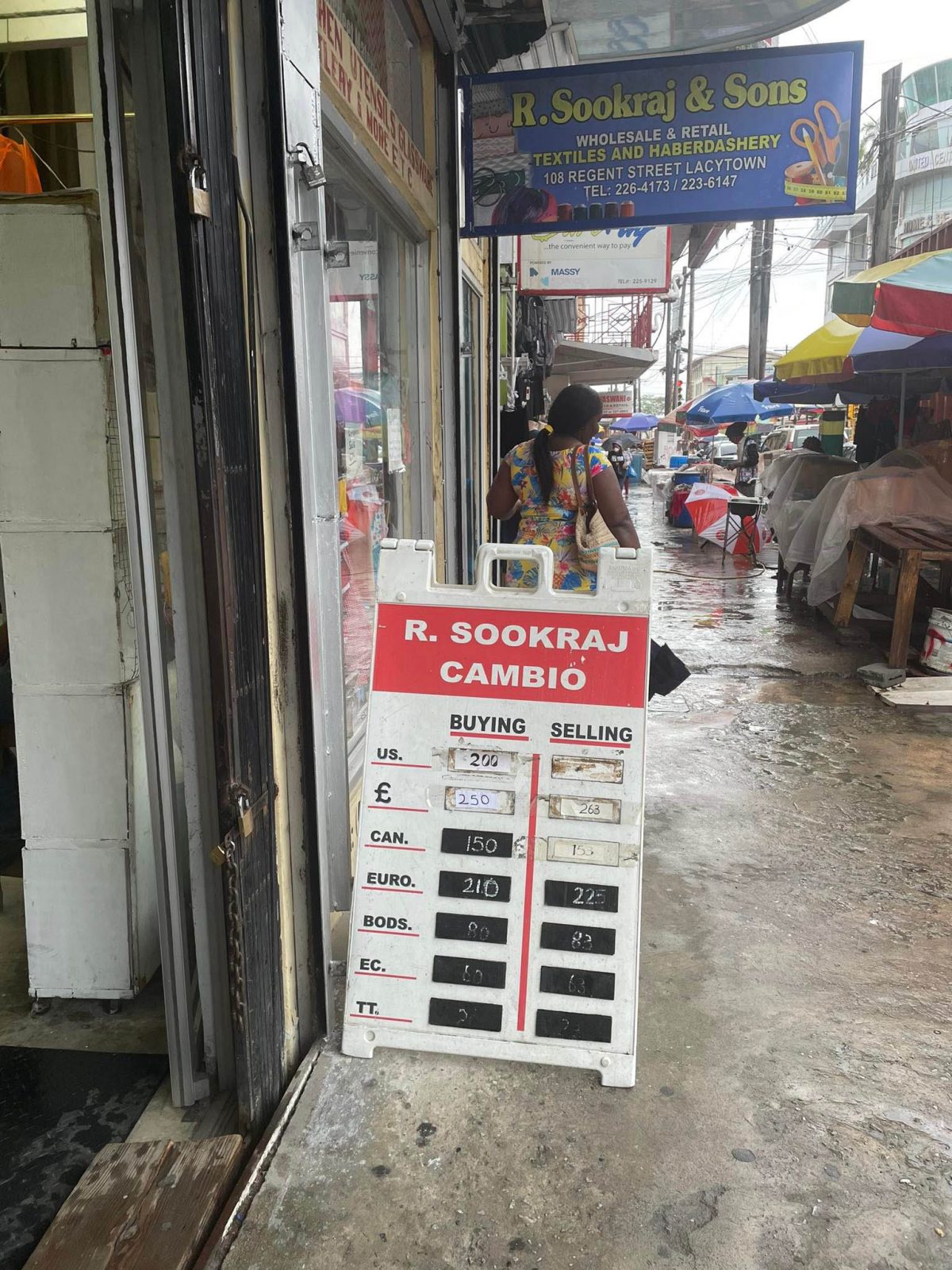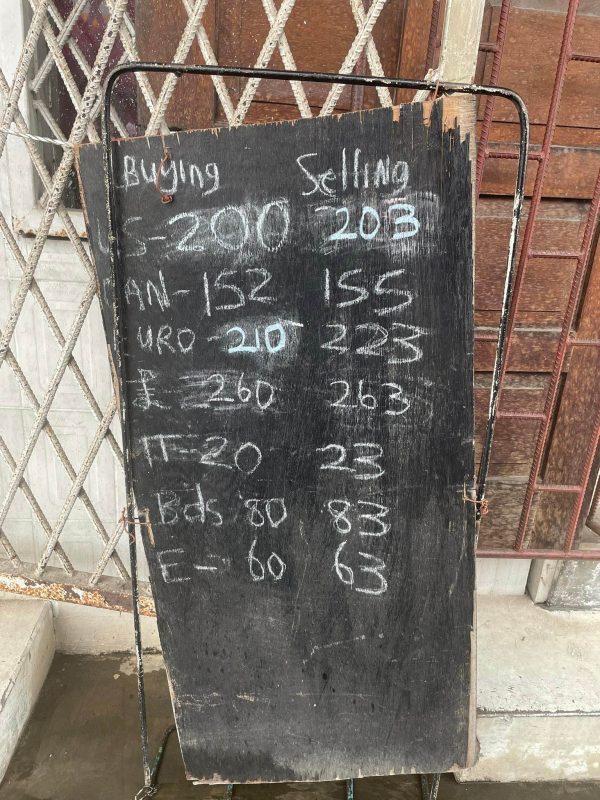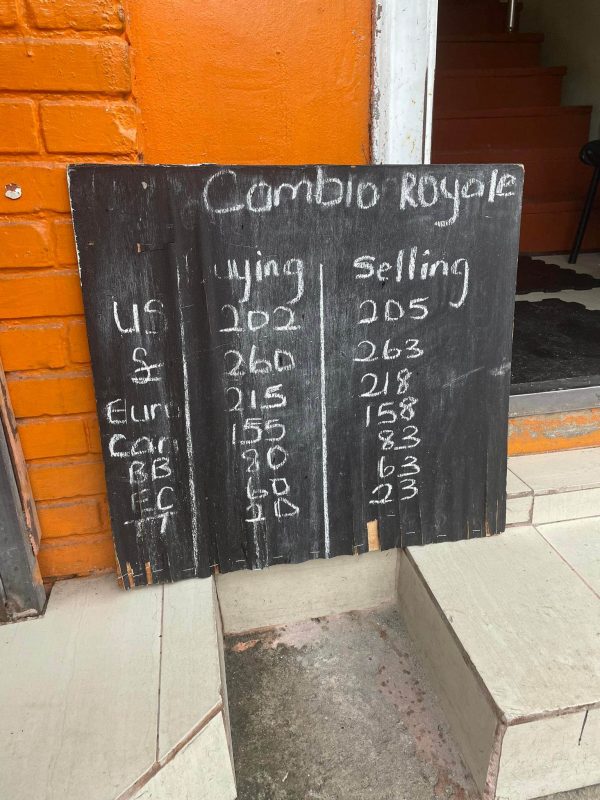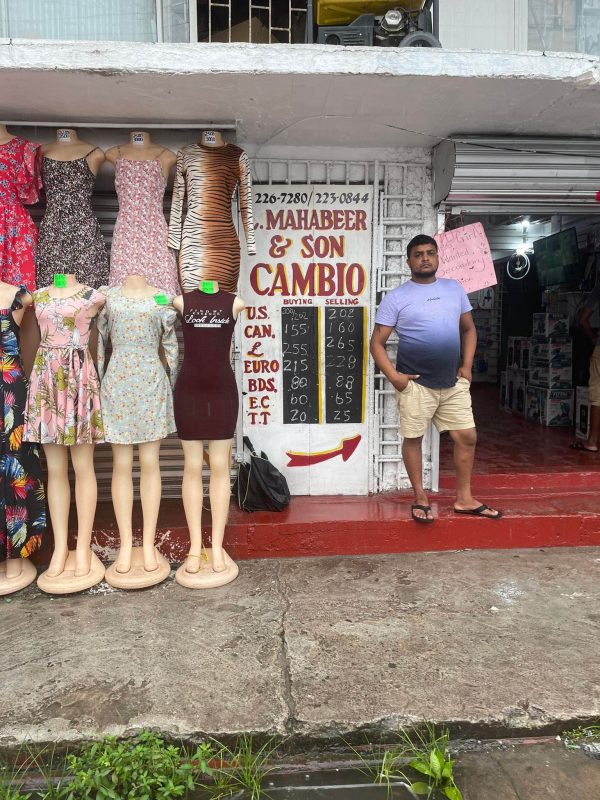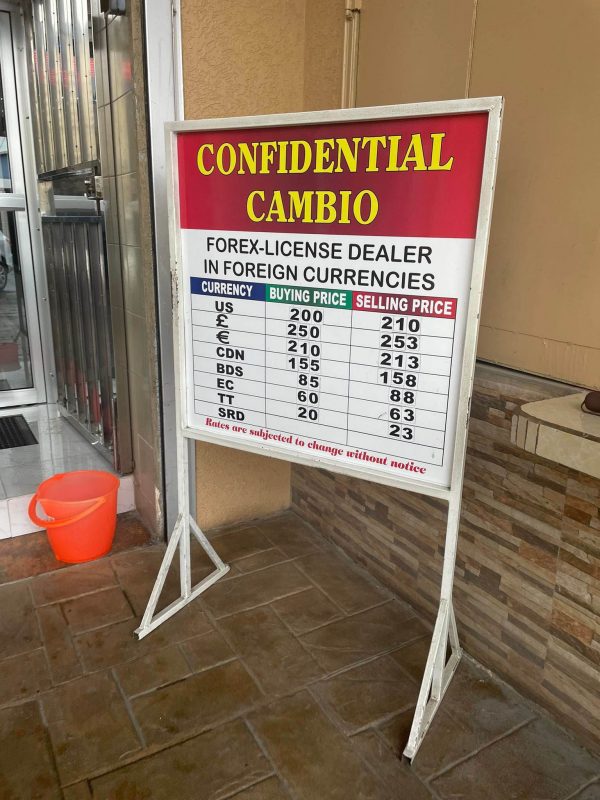The current influx of United States dollars and lower demand for the currency is the reason the Guyana dollar is holding at a steady exchange rate of US$1 to $200, and not that there is an appreciation, Central Bank Governor Gobind Ganga says.
It is also why bank and wire transactions still attract exchange rates from $215 to $217 per US$1, and the governor doesn’t foresee the spread decreasing anytime soon, given the cost that comes with having to ship foreign currency back overseas.
But compared with state and commercial banks in the region, Guyana’s spread on foreign bank and wire transfers is the highest, even with Barbados’ Foreign Exchange Fee attached.
“The banks have a lot of US currency… there is a lot of US in circulation so that is the reason. It is not that there is an appreciation, because as you know, there is a fee to take the money back out,” Ganga told the Stabroek News.
With foreign currency flowing into the country from oil sales, the value of the local currency would be expected to rise. This year the equivalent of US$607m is to be injected into the Consolidated Fund from oil proceeds.
This newspaper checked the Central Bank and some of the local commercial banks and cambios, and the US dollar could be readily bought. However, the exchange given on both buying and selling of notes varied according to denomination.
While the banks had a standardised fee for all notes, at local cambios you were given up to two dollars more than the displayed rate if the notes were US$100 bills.
The Bank of Guyana forex rate as at Friday afternoon was $207.98 buying and $210.45 selling, for US$1.
At Demerara Bank, the US dollar was bought at $204 and sold at $213 for notes. Buying and selling for other transactions had rates of $214.25, $213, and $215.75 to US$1, respectively.
Republic Bank Limited bought notes at $200 to US$1 and sold at $203 but drafts were $211 and $208.5 respectively. Card transactions and wires had a $218 to $1 rate.
The Guyana Bank for Trade and Industry said it was buying notes for $208.50 and selling at $211.50. Others saw rates of $209 buying and $214 selling.
Citizens Bank listed that it was buying the US dollar at $200 and selling at $214.50.
Scotiabank displayed rates of buying at $200 and selling at $203 for notes, and $210.50 for buying wires and drafts and selling at $215.50.
At the cambios, most were buying for between $200-$202 and selling between $202 to $205.
In Guyana the buying and selling spread is higher than in the Caribbean region, where in Trinidad and Tobago, the US dollar is exchanged for TT$6.7537 buying and TT$6.7547 selling.
In Jamaica it is JM$153.716 to US$1 buying and JM$155.588 selling.
Over in Barbados, its Central Bank of Barbados lists B$1.98 buying and selling B$2.02 for US$1, respectively. However, Barbados also has a Foreign Exchange Fee (FXF) of 2% on purchases of foreign currency and payments related to foreign currency transactions. The FXF applies to purchases and payments only, so when a person converts foreign cash to local money, deposits a foreign bank draft, or receives a wire transfer, they will not have to pay the FXF. That country also has a list of exemptions for the fee.
Security firms
One local banking analyst noted that given that banks would have to pay security firms for the logistical aspect of getting the currencies to their respective countries, most spreads would take that into consideration. “Banks in Guyana would pay Brinks or other security firms to take cash out. You have to pay for that. So it would stand to reason that banks would prefer to sell the cash and not have to pay to get it out. The more notes, in some instances, and not value, is what counts sometimes,” the analyst explained.
“That aside, Guyana’s spread and charges on credit cards for foreign transactions seems a little high. But it would be up to the regulators to address that. For credit and debit cards you have to look at currency conversion, be it DCC [Dynamic Currency Conversion] or from the issuer and all of that. Now that is aside from the foreign transaction fee. So there are a lot of factors the banks take into play before the rates are established,” he added.
At one time in 2017, the Guyana Dollar had been under pressure where both the business community and members of the public bemoaned having to settle transactions at a rate of $230 to US$1 and higher. Both the government and the Central Bank had played down the concerns.
The Central Bank had intervened and had distributed circulars to the bank and non-bank cambios limiting the spread between the buying and selling rates for currency to $3. It also issued one to money transfer agencies, as it had said there was enough currency.
However, then Minister of Finance Winston Jordan had said that government was prepared to inject foreign currency into the market but before the Central Bank committed to releasing it, they had asked commercial banks to help “weed out” illegitimate requests, even as it considered closing foreign currency retention accounts of businesses it claimed were “hoarding.”
Jordan had also contended that the exchange rate for the US dollar had at the time remained a constant $210, due to the collective action of the commercial banks until a spike in late 2016. He had explained that this spike had been resolved into a continuous increase in the rate, due to the competitiveness of the banks, which have been offering different buying rates.
The Minister had expressed the hope that the banks could collectively trust each other to fix the rate rather than attempting to break that agreement.
Then Opposition Leader, Vice-President Bharrat Jagdeo had warned Guyanese business persons that issues surrounding the country’s exchange rate were likely to get progressively worse with the cost of US$1 likely to reach as high as $250 or $300.
Supporting his position by citing a lack of Foreign Direct Investment (FDI) and increased domestic spending, which he said has created an increase in the demand for foreign currency, which has placed pressure on the local exchange rate, Jagdeo had said that he did not see Guyana sustaining its balance of payments in the long term.
